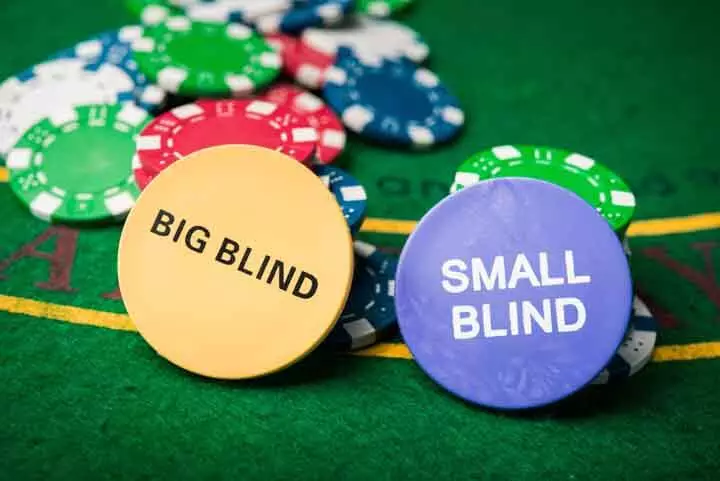Without exaggeration, poker is one of the brightest and most popular card games spread all over the world - from Europe and Asia to America. In the Canadian online and offline gambling market, poker is also widespread - according to statistics, annually about 100,000 Canadians are looking for a place to play one of the types of poker virtually. That is why Canadian online casinos strive not only to maintain cooperation with video poker operators, but also conduct entire marketing campaigns to attract poker lovers to their sites. Let's consider the detailed rules of this game.

The first thing a poker player needs to do to start the game is to choose a suitable table. They may differ in the type of poker (Hold'em, Omaha, five-card, seven-card, etc.) and in many other parameters. In terms of discipline, you should choose the table at which the card discipline that you want to learn to play is offered. For example, how to play Texas Hold'em Poker, you can read here. Now you should decide on the size of the bets or the limit, which are divided into the following categories:
The amount of bets will directly affect your choice, since the minimum size of the stack that you can take to the table depends on it. For example, depending on the poker room, for a table with bets of 0.01/0.02 $ You can take from $ 0.80, and for a table of $ 0.10/$0.20, the minimum stack will already be $ 8. It turns out that your choice can be influenced not only by personal preferences, but also by financial opportunities. For example, if you have $7 in your account, you will not be able to sit at the table with bets of $0.10/$0.20, since your bankroll is less than the minimum stack. For those who are interested in how to play poker on cards correctly and win, we recommend following bankroll management, which allows you to determine the optimal table in accordance with the financial capabilities of the poker player.
Advice from the editorial board of Canada-mobile: It is advisable for beginners to start their acquaintance with poker with minimal bets.
When choosing, you should also take into account the conditions for declaring bids. So, tables within the same discipline may differ in the size of the maximum bets that can be made in the auction:
The terms of the announcement of bids affect the specifics of trading. So, at an unlimited table, you can put the entire stack at any time, which forces you to play the game more carefully and often use bluff. In fixed-format poker, you can play more freely, since it is impossible to lose a large amount in one round of trading, but in tactical techniques, participants are limited. Having decided on the bids, you should choose a table according to the number of seats:
Advice from the editorial board of Canada-mobile: Beginners are recommended to start with full tables. When you learn the rules of poker and understand how to play correctly and win— you will be able to choose for yourself the optimal table format that will bring you the greatest profit.

In all types of poker, bets are applied, which the player is forced to make without fail. They are announced in order of priority before the cards are dealt and can be of the following type:
Ante is not used in all games, but mainly in tournaments and at specialized tables. It is put by all participants of the table. The size of the Ante is set by the rules of a particular game and can be 1/6-1/2 of the size of the blind. The ante always acts simultaneously with the blinds;
Blinds are used in Hold'em, Omaha, Krushavel, Badugi, five-card poker. Before the cards are dealt, they are put on the table by two participants sitting to the left of the Button;
Bring-in is applicable in Stud and Razz poker, where there are no blinds. This is done by the player who has the worst first open card. For Stud, this is the lowest card, and for poker Razz and Stud Hi-Lo — the highest denomination. A poker player can refuse to Bring-in and place a full bet.
Mandatory rates, which are also called "blind", serve to form a bank. The bank created before the cards were handed over increases the interest in its drawing among the participants of the table. In the tournament game, there is a regular increase in mandatory bets at regular intervals — event levels. This allows you to reduce the time of the tournament, because if there was no constant increase, large online events would last several days.
The easiest way to understand the rules of poker and how to play online is by using the example of the gameplay scenario, which we will describe in detail. This scenario is common to all disciplines:
You should study the combinations in the pictures and the rules for their compilation. Be sure to read this article and watch the video for it to get the full amount of information about poker combinations.
Each participant of the distribution is provided with several types of solutions that he can announce in the auction. They are taken in turn, but since we teach you how to play poker in an online format, we will not tell you about the order. The poker client automatically monitors the queue. It will be important for you to know the rules of precedence in order to understand the value of the position, which you will learn about by studying the strategy and bluffing techniques. During the bidding process, you will be able to make the following decisions:
In one hand, a poker player cannot use more chips than he had in his hands at the time of its beginning. Stack purchases are allowed only between hands, and in tournaments they are possible only in events of a certain format - with rebays and addons.
The essence of the bidding is to pursue the following goals:
Advice from the editorial board of Canada-mobile: We recommend you to learn poker in the game for free chips, which is offered by all the poker rooms recommended by us. You will be able to master the basic rules without risks. To play a profitable game, you will also have to learn the strategy.
Card games are exciting entertainment and an opportunity to make money if the game is played for money. Currently, the most popular varieties of them, namely Poker, are available online. Thanks to this, every Internet user can start playing poker from his computer or phone. This attracts tens of thousands of players to poker rooms in Canada! If you also want to play poker online, carefully study our rules and tips - then you can bet more consciously.